Table of Contents
Toggle7 Rules of Great Translation Quality Assurance
Quality assurance is essential to any translation project. However, ensuring quality translations can be tricky. Here are seven rules to help you produce great translations every time. By following these simple guidelines, you’ll be able to guarantee high-quality translations that meet all your requirements.

1. Establish a translation quality assurance (TQA) process
Creating a translation quality assurance (TQA) process is essential to guarantee high-quality translations. The first step is to establish the criteria that will be used to evaluate translation quality. This can include factors such as accuracy, readability, fluency, and consistency. You’ll also need to create a system for assessing how well each translation meets these criteria.
Once you have your criteria in place, you can begin setting up your TQA process. This will involve creating a workflow for reviews and approvals, as well as establishing guidelines for how translators should work. Make sure you also have a system for tracking errors and feedback so that you can continually improve your translations.
This process should include the following steps:
1. Establish translation requirements and expectations
2. Select qualified translators
3. Assign translators to projects
4. Review translations
5. Approve translations
6. Distribute translations
7. Monitor translations
By following these steps, you can be sure that your translations will meet all your requirements and expectations.
2. Define clear objectives for your TQA process
One of the key objectives of any TQA process is to ensure that translations meet customer requirements. In order to do this, you need to be clear about what those requirements are. This includes specifying the target audience, the type of translation required (e.g. formal or informal), and any specific formatting or branding guidelines.
You should also make sure that your objectives are SMART:
Specific: Clearly define what you want to achieve
Measurable: Have a way of measuring whether or not your objectives have been met
Achievable: Make sure your objectives are realistic and achievable
Relevant: Make sure your objectives are relevant to your business goals
Time-bound: Set a timeframe for achieving your objectives
By setting specific, measurable, achievable, relevant, and time-bound objectives, you can ensure that your TQA process is effective and efficient.
3. Select qualified translators
The quality of translations depends largely on the quality of the translators involved. In order to ensure high-quality translations, you need to select translators who are qualified and experienced in the language you require. They should also have a good understanding of the culture of the target audience.
It’s also important to establish clear guidelines for translators so that they know what is expected of them. This should include information on terminology, style, and formatting guidelines. Translators should also be provided with feedback so that they can continually improve their work.
4. Assign translators to projects
Once you have selected qualified translators, you need to assign them to projects. You should create a system for matching translators with appropriate projects based on their skills and experience. This will help ensure that each translator is working on projects that they are qualified to do. It will also help prevent overlap between projects and reduce the risk of errors.
5- Assign tasks and responsibilities to specific team members
Once you have identified the tasks and responsibilities that need to be carried out as part of your TQA process, it’s important to assign these tasks to specific team members. This will help ensure that everyone understands their role in the process and is held accountable for meeting deadlines and delivering high-quality translations.
It’s also important to provide team members with feedback and support so that they can continually improve their skills. This will help ensure that your TQA process is as effective and efficient as possible.
6- Implement a system for tracking errors and feedback
In order to continuously improve the quality of translations, it’s important to have a system in place for tracking errors and feedback. This should involve having a centralized system for logging and tracking all errors, issues, feedback, and changes that take place as part of the process. Having access to this data will help you identify areas where your translations may be falling short and allow you to make the necessary improvements.
7- Monitor results and continually improve
Finally, it’s important to monitor the results of your TQA process and make any necessary changes or improvements. This could involve reviewing the feedback from customers, conducting regular audits of translations, or running quality assurance tests. By continually monitoring and improving your TQA process, you can ensure that all translations are of the highest possible quality and meet customer requirements.
By following these steps, you can establish an effective TQA process that helps ensure the highest quality translations for your business. Taking the time to develop and implement a comprehensive TQA process will help ensure customer satisfaction and give you a competitive edge in the translation industry.
FAQ
Q: How do I select qualified translators?
A: In order to ensure high-quality translations, you need to select translators who are qualified and experienced in the language you require. They should also have a good understanding of the culture of the target audience. It’s also important to establish clear guidelines for translators so that they know what is expected of them.
Q: How do I assign translators to projects?
A: You should create a system for matching translators with appropriate projects based on their skills and experience. This will help ensure that each translator is working on projects that they are qualified to do. It will also help reduce the risk of errors by preventing overlap between projects.
Q: How do I monitor the quality of translations?
A: You should have a system in place for tracking errors and feedback, as well as monitoring customer satisfaction. It’s also important to conduct regular audits of translations and run quality assurance tests to ensure that all translations are of the highest possible quality and meet customer requirements. By continually monitoring and improving your TQA process, you can ensure that all translations are of the highest quality.
Q: How do I ensure customer satisfaction with translations?
A: In order to ensure customer satisfaction with translations, you need to have an effective TQA process in place. This should involve selecting qualified translators and assigning them to appropriate projects, as well as monitoring results and continually improving the process. By following these steps, you can ensure that all translations are of the highest quality and meet customer requirements.
Q: How do I ensure delivery on time?
A: In order to ensure delivery on time, you should create a system for setting deadlines and tracking progress. It’s also important to provide team members with feedback and support so they can continually improve the quality of their work. By taking the necessary steps, you can help ensure that all translations are completed on time and to a high standard.
By taking the time to establish an effective TQA process, you can ensure customer satisfaction and provide translations of the highest quality. By following these steps, you can help make sure that your business stands out from the competition and continues to have a competitive edge in the translation industry.
The key takeaway here is that having an effective TQA process in place is essential for ensuring the highest quality translations and customer satisfaction. By taking the time to develop and implement a comprehensive TQA process, you can help ensure that your business has a competitive edge and consistently delivers high-quality translations.
Conclusion
An effective and comprehensive TQA process is essential for ensuring the highest quality translations and customer satisfaction. By selecting qualified translators, assigning them to appropriate projects, monitoring results, and continually improving the process, you can help ensure that your business stands out from the competition and consistently provides high-quality translations. With a well-designed TQA process in place, you can give yourself an advantage over the competition and remain a leader in the translation industry.





